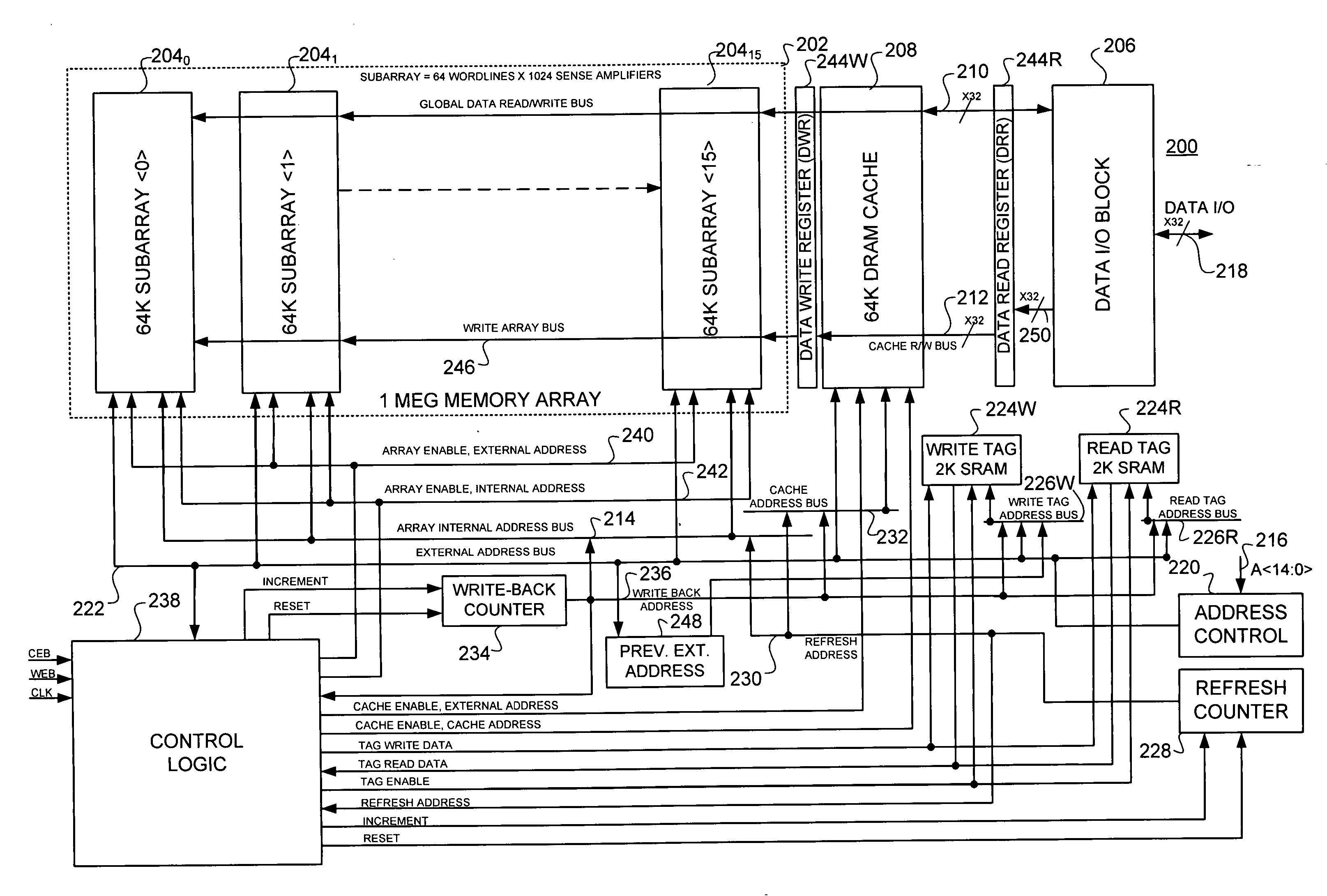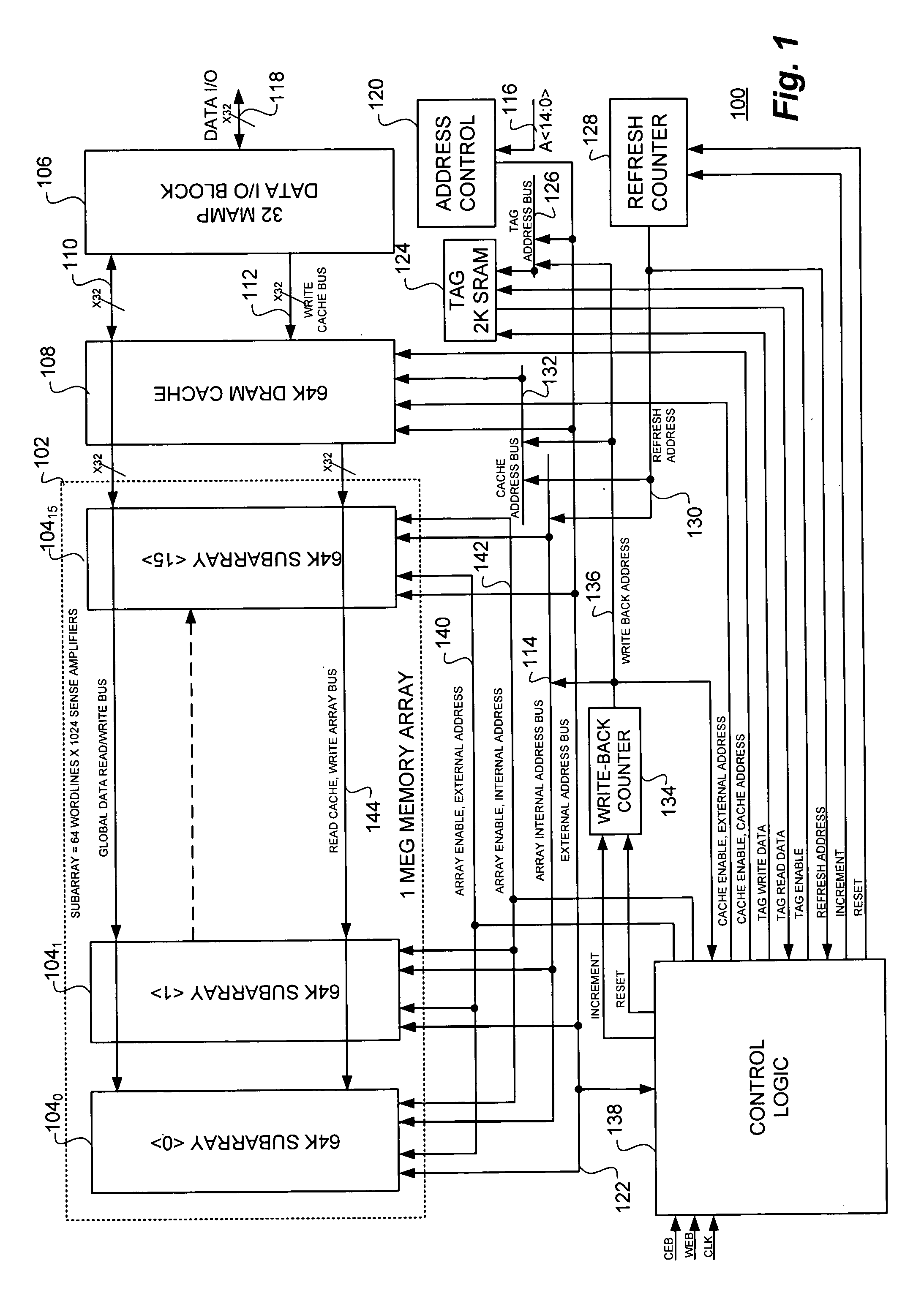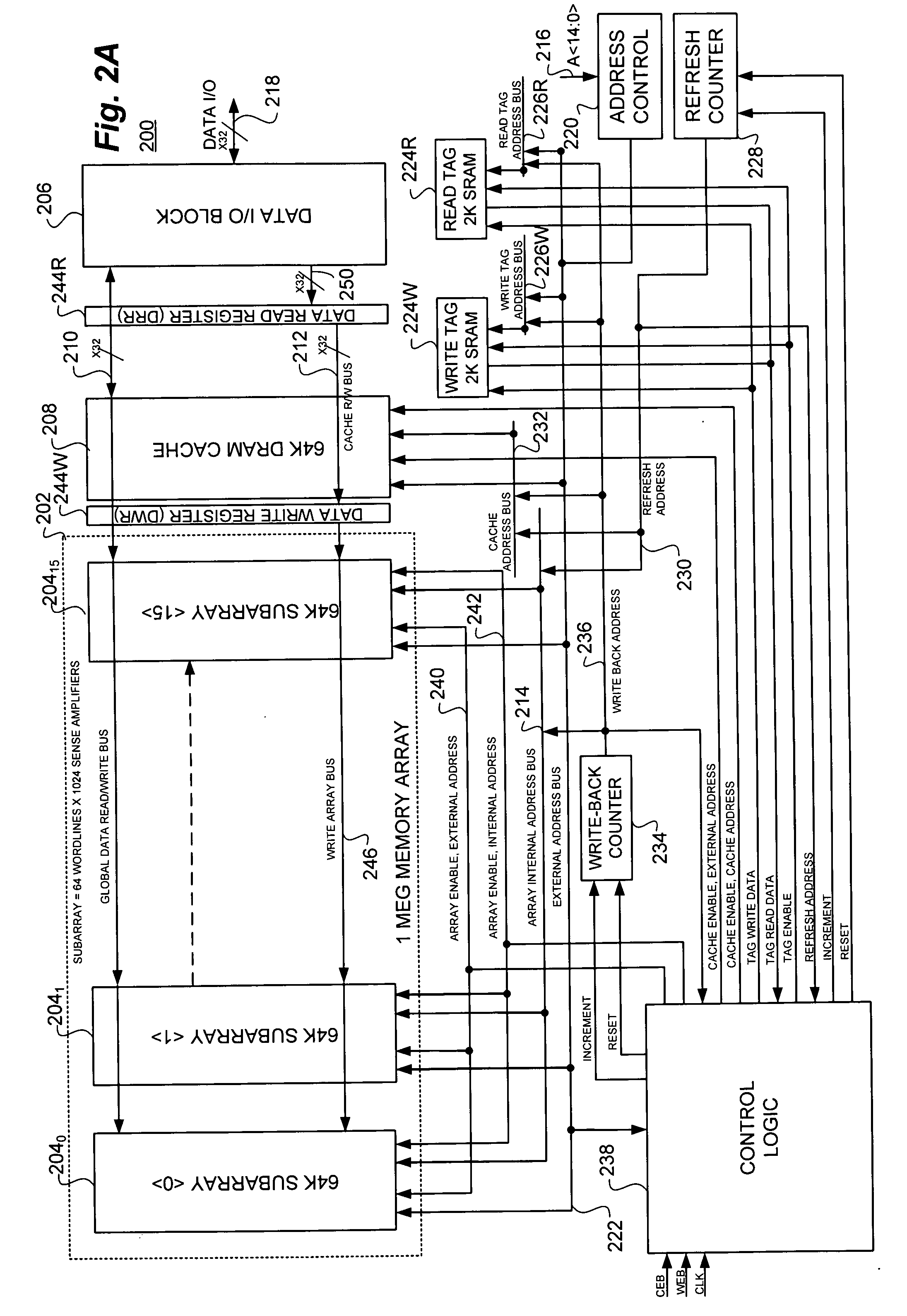Static random access memory (SRAM) compatible, high availability memory array and method employing synchronous dynamic random access memory (DRAM) in conjunction with a data cache and separate read and write registers and tag blocks
a memory array and high availability technology, applied in the field of integrated circuit memory devices, can solve the problems of unacceptably large performance penalty, significant access time and cycle time penalty, and high cost of sram on a byte-for-byte storage basis, and achieve the effect of reducing the read access tim
- Summary
- Abstract
- Description
- Claims
- Application Information
AI Technical Summary
Benefits of technology
Problems solved by technology
Method used
Image
Examples
Embodiment Construction
[0054] With reference now to FIG. 1, a functional block diagram of a memory 100 as disclosed in the aforementioned United States Patent is shown wherein refresh of the subarrays and cache may be effectuated in parallel with any combination of external accesses and control logic and control signals may be thereby used to hide refresh operations in the memory array.
[0055] The memory 100 comprises, in the representative implementation illustrated, a 1 Meg memory array 102 comprising sixteen 64 K subarrays 1040 through 10415 (subarray 0> through subarray 15>). A data I / O block 106 is coupled to a 64 K DRAM cache 108 as well as the subarrays 1040 through 10415 by a global data read / write bus 110. A read cache, write array bus 144 couples the DRAM cache 108 to the subarrays 1040 through 10415. Write cache bus 112 couples the data I / O block 106 and the DRAM cache 108. The DRAM cache 108 may be the same size as each of the subarrays 1040 through 10415.
[0056] An array internal address bus ...
PUM
 Login to View More
Login to View More Abstract
Description
Claims
Application Information
 Login to View More
Login to View More - R&D
- Intellectual Property
- Life Sciences
- Materials
- Tech Scout
- Unparalleled Data Quality
- Higher Quality Content
- 60% Fewer Hallucinations
Browse by: Latest US Patents, China's latest patents, Technical Efficacy Thesaurus, Application Domain, Technology Topic, Popular Technical Reports.
© 2025 PatSnap. All rights reserved.Legal|Privacy policy|Modern Slavery Act Transparency Statement|Sitemap|About US| Contact US: help@patsnap.com



